Top 10 Wildlife Safaris that you must Experience in India
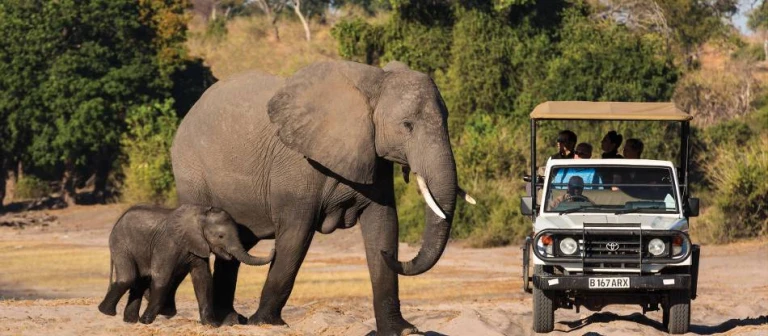
The vicious tiger is hiding behind the dense bamboo bushes and is calmly waiting for its prey. The shrieking of an eagle periodically breaks the contemplative calm of the heavens above. The cunning crocodile lies still, waiting for the right time to strike.
Meanwhile, in the distance, a herd of deer stops by the neighborhood watering hole to satisfy their thirst. These are some of the sights you can expect when you travel through India's deep jungles on a jungle safari.
This safari is unlike any other and is jam-packed with surprises and thrills. Seeing animals in nature express their true feelings in their natural setting is nothing short of a gift.
Here are the best Places to Go for Jungle Safari in India
Jim Corbett National Park, Uttarakhand
Ranthambore National Park, Rajasthan
Gir National Park, Gujarat
Kanha National Park, Madhya Pradesh
Bandhavgarh National Park, Madhya Pradesh
Pench National Park, Madhya Pradesh
Sunderbans Wildlife Sanctuary, West Bengal
Hemis National Park
Satpura national park
Kaziranga National Park
1. Jim Corbett National Park, Uttarakhand

Corbett National Park, India's first national park, was created in 1936. Visitors may observe the magnificent tiger, as well as other animal, reptile, and bird species such as barking deer, spotted deer, sambar, and chinkara.
Crocodiles and Royal Bengal Tigers are also attracted to the park in its natural habitat. With over 600 bird species, it provides a once-in-a-lifetime opportunity for wildlife enthusiasts to see India's biodiversity.
The park's tranquil environment and gorgeous scenery make it a great location for nature enthusiasts looking for a peaceful wilderness vacation.
Best time to visit: November to June.
2. Ranthambore National Park, Rajasthan
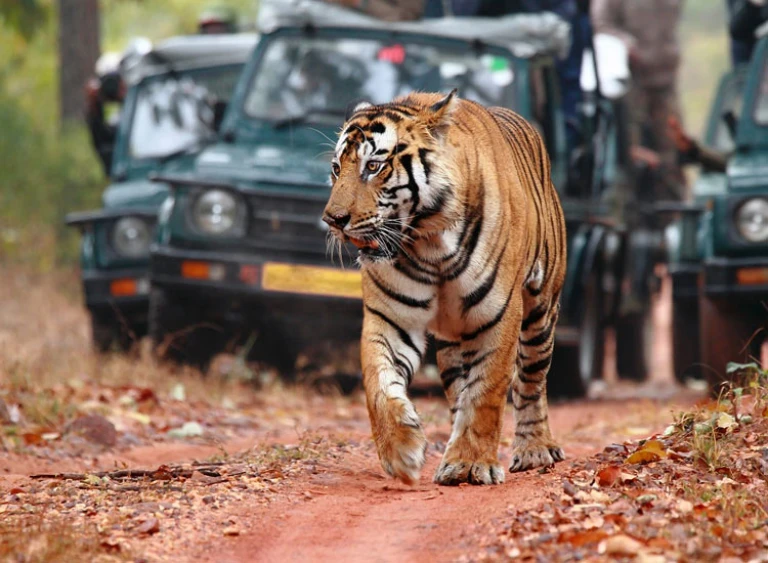
Ranthambore Tiger Reserve is a prominent wildlife safari location in India, including tigers, jackals, foxes, leopards, and mongooses among the species. Jungle safaris are also available for visitors to witness nilgai, blue bull antelope, chital, and sambar deer.
The reserve's lush woodlands and different ecosystems provide animal enthusiasts and environment lovers with a memorable experience. Ranthambore National Park provides the greatest forest excursions in India, with skilled guides and trackers delivering an exciting and educational safari experience.
Best time to visit: October to June.
Also read: Spotting Tigers in Ranthambore National Park: Expert Tips
3. Gir National Park, Gujarat
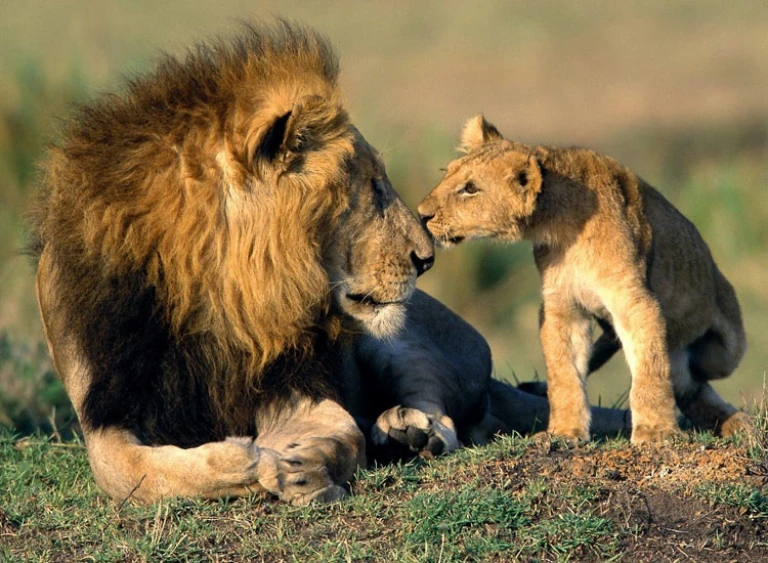
Gir National Park is home to lions, crocodiles, hyenas, and leopards, as well as lush vegetation such as teak forest, amla, timru, and khair. Asiatic Lions are the most appreciated animals, with the Chital, or Indian spotted deer, coming in second.
Other attractions include striped hyenas and wild boars, as well as a variety of birds such as the Malabar whistling thrush and Paradise flycatcher.
Gir National Park, which attracts both animal enthusiasts and birdwatchers, provides an immersive experience in the heart of nature.
The park has a wide range of bird species to see, making for an amazing Indian jungle safari excursion.
Best time to visit: December to March
4. Kanha National Park, Madhya Pradesh
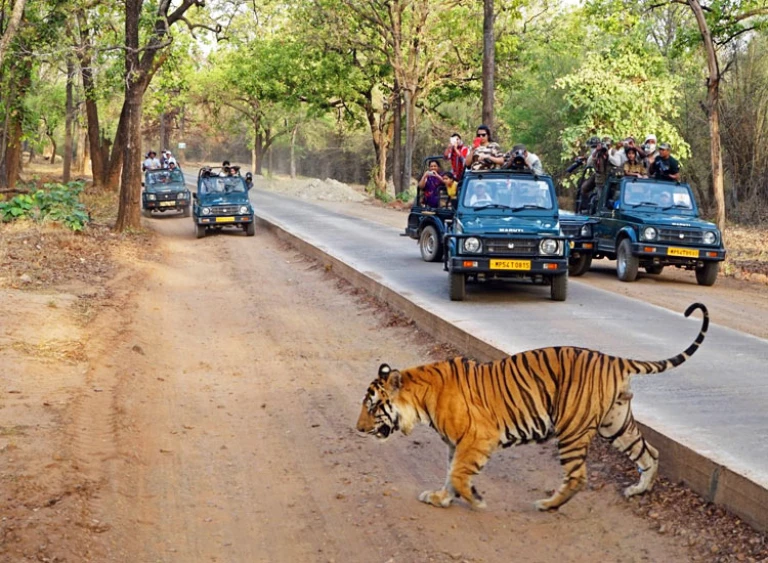
Kanha National Park, which covers 940 square kilometers, is one of Madhya Pradesh's largest national parks and is well-known for its role in preserving the Barasingha from extinction. Safaris may be taken to see the Royal Bengal Tiger, Barasingha, and wild dogs.
National Geographic's award-winning "Land of the Tigers" was also filmed at the park. Kanha National Park is noted for its huge size, conservation efforts, breathtaking scenery, and rich fauna, making it a nature lover's and photographer's dream.
Kanha provides an amazing experience in the Indian forest, whether you are a wildlife enthusiast or looking for a one-of-a-kind adventure.
Best time to visit: Mid-October to June end
5. Bandhavgarh National Park, Madhya Pradesh

Bandhavgarh National Park in India is a must-see for wildlife safaris due to its high concentration of Royal Bengal tigers. Visitors may view chital, nilgais, Indian bison, chinkara, jackals, and wild boars, among other creatures.
They may also see bird species such as Malabar hornbills, green pigeons, and browed fantails. The park is also a historical location, with old ruins and caverns said to have been inhabited by humans thousands of years ago, which adds a new level of thrill to the safari experience.
Best time to visit: October to June
6. Pench National Park, Madhya Pradesh
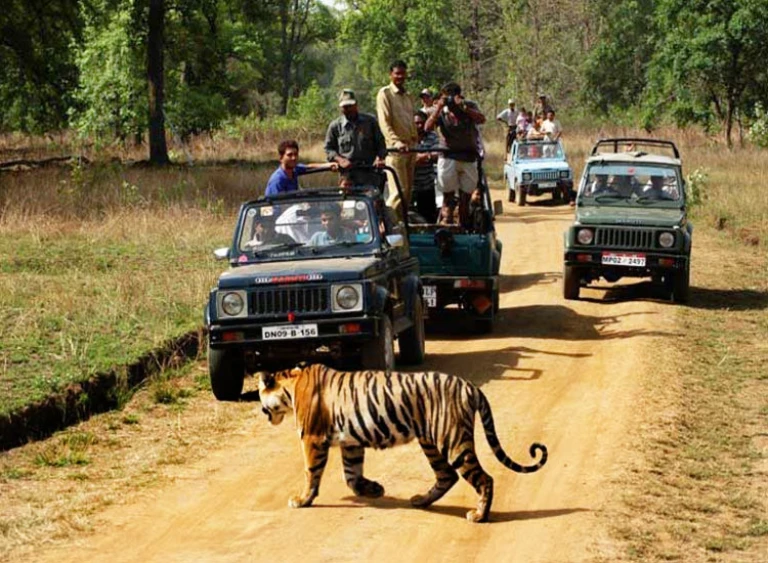
Pench National Park, located in the southern Satpura range, is a favorite location for nature lovers and photographers. It is home to a diverse range of fauna, including the Nilgai, Cheetal, Sambha, and Gaur (Indian Bison).
The park also has four endangered vultures, including the white-rumped, long-billed, white scavenger, and king vulture, which play an important part in the area's ecological balance. The park also has a large tiger population, making it a popular destination for wildlife aficionados.
Best time to visit: February to April
7. Sunderbans Wildlife Sanctuary, West Bengal

Sunderbans Wildlife Sanctuary is a UNESCO World Heritage Site and India's biggest Tiger Reserve and National Park, located amid India's largest delta. The tiger is a prominent topic of discussion, and tourists may see the legendary tiger, rhesus monkey, and chital deer.
The park is especially well-known for its efforts to protect the Ridley Sea Turtle. Because of its deep mangrove forests and complicated network of waterways, the Sunderbans provides the most exhilarating tiger safari in India.
Boat safaris provide guests with the opportunity to see beautiful tigers as well as a broad range of bird species, including the endangered masked finfoot and the elusive kingfisher.
Best time to visit: September to March
Also read: Incredible India's UNESCO Gems: A Traveler's Delight for more information on India's rich cultural heritage and architectural wonders that have been acknowledged by UNESCO.
8. Hemis National Park
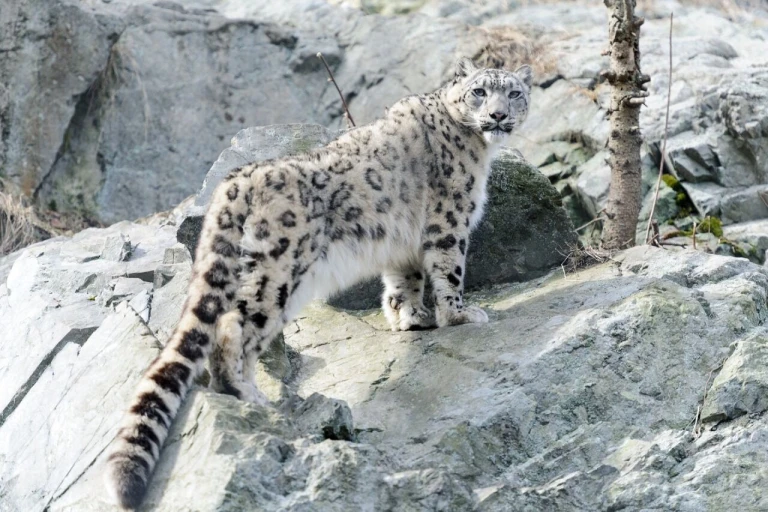
This high-altitude protected region, the only one in India north of the Himalayas, is said to contain the largest population of snow leopards in the world. It receives its name from the Hemis Monastery, which has an important collection of Buddhist texts and artifacts and is also home to the Tibetan wolf and blue sheep, as well as several birds of prey. It is located in Ladakh on the banks of the Indus River.
It is a significant cultural and ecological site. The Hemis National Park is noted for its harsh terrain and rich animals, spanning over 4,400 square kilometers. The park provides spectacular views of the surrounding mountains and is a popular hiking and wildlife destination.
It is also recognized as a UNESCO World Heritage Site, recognizing its importance in preserving the unique biodiversity of the region.
Best time to visit: May to October
9. Satpura National Park
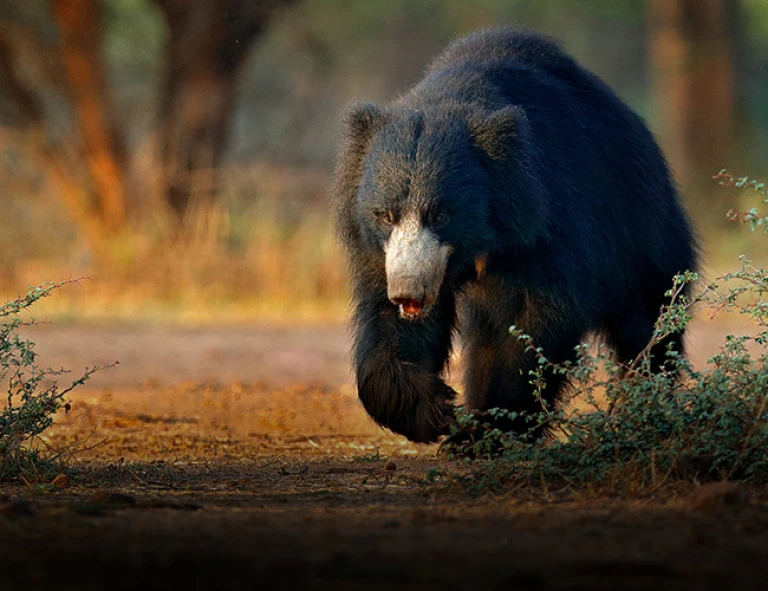
Away from the tourist hordes, the mountainous Central Indian park in Madhya Pradesh provides a unique and immersive experience. Using boats, kayaks, and hideouts, visitors may see tiger habitats in a novel way.
The park's distinctive environment includes jagged sandstone cliffs and lush woods illuminated by the sparkling waters of the Tawa reservoir. This enables for a better grasp of the tiger's native surroundings and a greater respect for its beauty.
The stunning panorama of sandstone peaks and lush woods, coupled by the shimmering waters of the Tawa reservoir, adds to the park's distinctive and immersive feel.
Best time to visit: October to June
10. Kaziranga National Park
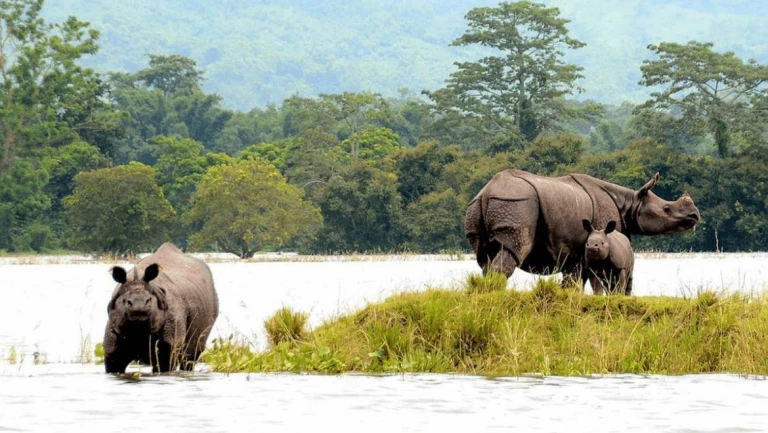
Assam's Kaziranga National Park, a Unesco World Heritage Site, is a well-known animal and ecological hotspot in India. It is home to around 2,200 endangered one-horned rhinoceros, a figure that has increased as a result of conservation initiatives.
Numerous bird species benefit from the park's varied flora, which ranges from towering elephant grass to thick woods.
Because of the park's unusual topography and climatic circumstances, it is home to a diverse range of plant species, making it a popular destination for botanists and nature enthusiasts.
Best time to visit: November to March
Conclusion
In the heart of India's deep jungles lies a world of captivating wildlife, each park offering a unique safari experience. From the historic Corbett National Park to the royal realm of Ranthambore, the diversity of species and ecosystems is truly remarkable. Gir National Park is a haven for Asiatic Lions, while Kanha National Park's vast expanse is a testament to conservation efforts.
Bandhavgarh entices with its high tiger population and historical intrigue. Pench National Park, with its rich biodiversity, beckons nature lovers and photographers alike. Sunderbans Wildlife Sanctuary, a UNESCO World Heritage Site, is a deltaic wonderland protecting the elusive tiger. Hemis National Park, with its snow leopards, offers a glimpse into the high-altitude world.
Satpura National Park provides an immersive experience, allowing visitors to witness tiger habitats in a unique way. Lastly, Kaziranga National Park's one-horned rhinoceros population thrives, making it a vital ecological hotspot.
With each park offering its own natural wonders, an Indian jungle safari promises a journey into the heart of untamed beauty.
Published at
About Author
Prerna Dixit
Subscribe our Newsletter
Get our weekly tips and travel news!
Related Posts
10 amazing hacks for comfortable train journeys in India
Make your Indian train journey comfortable with these 10 hacks: choose the right class, pack essentials, stay hydrated, wear comfy clothing, charge devices, bring entertainment, prioritize safety, book lower berths, use travel apps, and socialize.
10 Backpacking Destinations in India that you must check out in 2024
In 2024, explore India's diverse beauty with these 10 must-visit backpacking destinations, offering mountains, beaches, and cultural gems for every traveler.
10 Beach Wedding Destinations in India for Magical Memories
A beach wedding in India is a dream come true for many couples, with its picturesque backdrop of golden sands, azure waters, and stunning sunsets. From the shores of Goa to the beaches of Kerala, this blog has the 10 best wedding locations for you!
10 Best Flea Markets in India for souvenirs and more
Embark on a shopping adventure in India with our guide to the 10 best flea markets, from the vibrant Dilli Haat to Goa's bohemian Anjuna market. Unearth unique souvenirs and experience the cultural richness of each location.
10 Best Trekking Destinations in India for October and November
The months of October and November provide the perfect weather conditions for outdoor enthusiasts to embark on exhilarating treks.
Latest Posts
7 Indian Cities with Hop-On Hop-Off Tourist Buses and Routes
Explore India at your own pace! Discover 7 cities with easy Hop-On Hop-Off buses, routes, and budget-friendly tips.
5 Motorcycle Rental Routes in Ladakh for Enfield Enthusiasts in 2026
From Nubra Valley to Pangong Lake, explore the best Ladakh motorcycle rental routes for Royal Enfield riders planning a 2026 trip.
7 Best Wedding Venues in Nashik
From vineyard weddings to elegant banquets, discover Nashik’s best wedding venues compared by budget and guest capacity.
5 Houseboat Dinners in Alleppey for a Magical Christmas Eve
Celebrate Christmas Eve in Alleppey with top 5 candlelit houseboat dinners, festive Kerala cuisine, and serene backwater cruises. Discover the best options here.
7 Secluded Beach Resorts for New Year Couples Retreat
Planning a romantic New Year escape? Discover 7 secluded beach resorts in India perfect for couples seeking privacy, ocean views, and peaceful celebrations.

